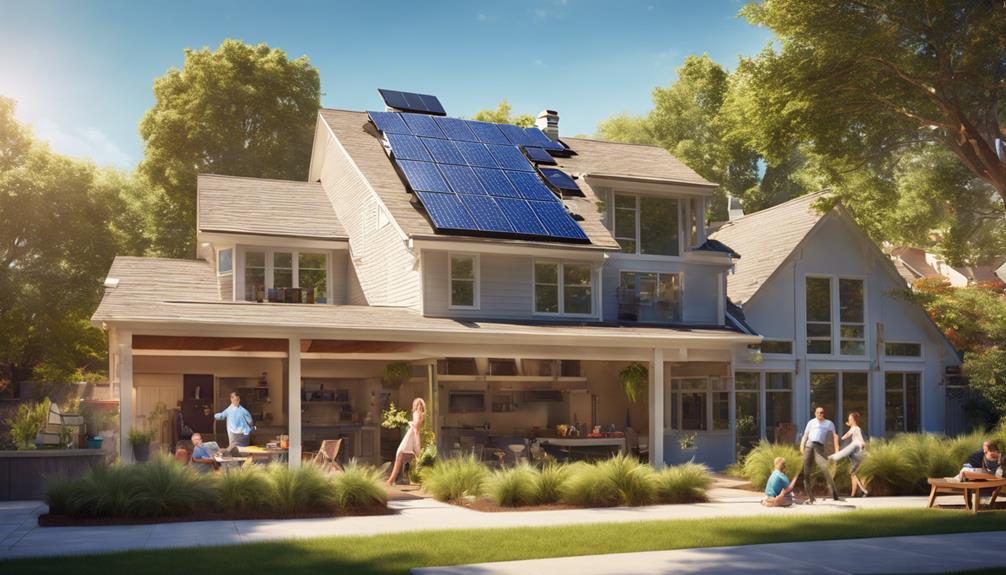
In recent years, the shift towards renewable energy sources has gained momentum, with solar energy becoming one of the most viable options for both residential and commercial use. One of the standout solutions in this category is the AC solar panel system. This comprehensive guide will delve into what AC solar panels are, their benefits, installation processes, and much more, ensuring you have all the information needed to make an informed decision.
What Are AC Solar Panels?
AC solar panels are a type of solar energy system that utilizes microinverters to convert the direct current (DC) produced by solar panels into alternating current (AC) for use in homes and businesses. Unlike traditional solar panels that require string inverters, AC solar panels allow for greater efficiency and flexibility in energy production. Each panel operates independently, meaning that if one panel is shaded or malfunctioning, it will not significantly impact the performance of the others. This technology is particularly beneficial in environments with varying light conditions, ensuring maximum energy output.
Benefits of AC Solar Panels
Choosing AC solar panels over traditional systems has several advantages. Firstly, they offer enhanced energy efficiency. Since each panel operates independently, the overall system can produce more energy, especially in partially shaded areas. Additionally, AC solar panels often come with warranties that cover both the panels and the microinverters, providing peace of mind for homeowners. Moreover, they allow for easier system expansion; if you decide to add more panels in the future, integrating them into your existing system is straightforward. Finally, AC solar panels can increase the value of your property, as more buyers are looking for homes equipped with energy-efficient technology.
How AC Solar Panels Work
The operation of AC solar panels is relatively simple yet effective. When sunlight hits the solar panels, they generate DC electricity. Instead of having a single inverter convert this DC electricity to AC for the entire system, each panel has its own microinverter attached. This microinverter converts the DC electricity produced by that specific panel into AC electricity, which can then be used to power your home or be fed back into the grid. This decentralized approach allows for more efficient energy conversion and minimizes energy loss, ensuring that you get the most out of your solar investment.
Installation Process of AC Solar Panels
Installing AC solar panels is a straightforward process, but it is crucial to work with professional installers to ensure everything is set up correctly. The first step is a site assessment, where the solar experts evaluate your roof’s orientation, angle, and shading to determine the best layout. Next, permits need to be obtained, which can vary based on local regulations. Once everything is in place, the installation begins. The solar panels are mounted on the roof, and the microinverters are attached directly to each panel. Finally, the system is connected to your electrical panel, and inspections ensure everything meets safety standards. The entire process typically takes one to three days, depending on the size of the system.
Cost of AC Solar Panels
Understanding the cost of AC solar panels is crucial for homeowners considering this investment. The total price will depend on several factors, including the size of the system, the type of panels selected, installation fees, and any applicable rebates or incentives. Generally, the upfront costs of AC solar panels may be slightly higher than traditional systems due to the microinverters. However, the increased efficiency and potential for higher energy production can offset these costs over time. It is essential to conduct a thorough cost-benefit analysis and consider financing options, such as solar loans or leases, to make the investment more manageable.
Maintenance of AC Solar Panels
One of the attractive features of AC solar panels is their low maintenance requirements. Regular maintenance is crucial to ensure optimal performance and longevity. Homeowners should periodically clean the panels to remove any dirt, debris, or snow that may block sunlight. Additionally, it’s advisable to have a professional inspection every few years to check the wiring, microinverters, and overall system performance. Microinverters are generally more reliable than traditional string inverters, which means fewer maintenance issues over time. It’s also beneficial to monitor your system’s performance using online portals or apps provided by the manufacturer, allowing you to spot any potential issues early.
Incentives and Rebates for AC Solar Panels
Federal, state, and local incentives can significantly reduce the overall cost of installing AC solar panels. The federal solar tax credit allows homeowners to deduct a percentage of the installation cost from their federal taxes. Many states and local governments also offer rebates, tax credits, and grants to encourage solar adoption. Furthermore, utility companies often have net metering programs that allow homeowners to earn credits for the excess energy produced by their solar systems. Researching and applying for these incentives can help make solar energy more affordable and accessible.
Conclusion: Is an AC Solar Panel System Right for You?
As we move towards a more sustainable future, the importance of renewable energy sources like solar power cannot be overstated. AC solar panels offer an efficient, flexible, and reliable solution for harnessing solar energy. With their numerous benefits, including increased energy efficiency, lower maintenance needs, and potential for high returns on investment, they are an attractive option for homeowners looking to reduce their carbon footprint and energy bills. If you are considering making the switch to solar, consult with a reputable solar provider to explore how AC solar panels can meet your energy needs and fit into your budget. Embrace the power of the sun and take a step towards a greener, more sustainable future today!





